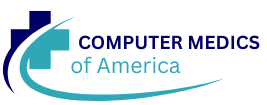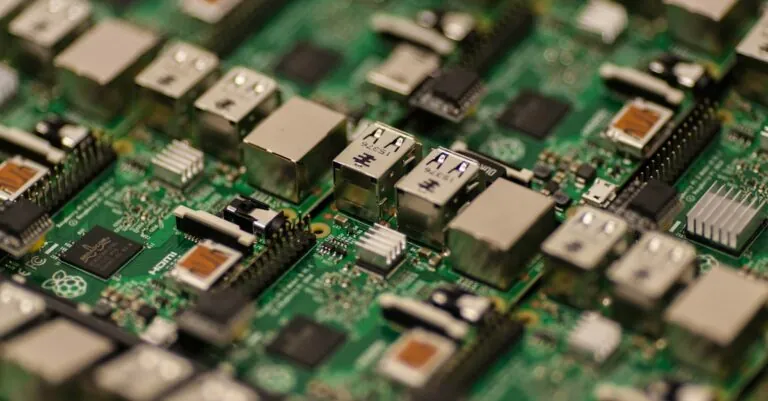In a world where your toaster might just be smarter than your average politician, the Internet of Things (IoT) is revolutionizing daily life. Imagine waking up to a coffee maker that knows your preferred brew and a thermostat that adjusts to your comfort level before you even step out of bed. These connected devices aren’t just fancy gadgets; they’re reshaping how people interact with their homes and the world around them.
As IoT technology continues to evolve, it’s not just about convenience anymore. It’s about creating a seamless experience that makes life easier—and a bit more fun. From smart fridges that can order groceries to fitness trackers that remind you to move, the possibilities are endless. Get ready to dive into the fascinating realm of connected devices that might just outsmart you while making your life a whole lot simpler.
Table of Contents
ToggleOverview of Internet of Things Connected Devices
Connected devices in the Internet of Things (IoT) ecosystem play a crucial role in modern life. These devices include smart appliances, wearables, and home security systems that communicate over the internet. Smart coffee makers streamline morning routines by allowing users to brew coffee remotely. Energy-efficient thermostats help maintain optimal home temperatures, contributing to comfort and savings.
Connected devices gather data, analyze patterns, and enable users to make informed decisions. For instance, fitness trackers monitor health metrics like heart rate and activity levels, motivating individuals to pursue healthier lifestyles. Home security cameras provide real-time surveillance alerts, enhancing safety and peace of mind.
Industries also benefit from IoT-connected devices. Manufacturing sectors utilize sensors for equipment monitoring, predicting maintenance needs and minimizing downtime. Retailers incorporate smart shelves to track inventory levels, ensuring products are always in stock for customers.
Security and privacy concerns arise as IoT devices become more prevalent. Users should prioritize choosing devices from reputable manufacturers, ensuring they regularly update firmware to mitigate vulnerabilities. Understanding data privacy policies offers another layer of protection against potential breaches.
Connected devices are reshaping user experiences, making everyday tasks easier and more efficient. Users can control home systems with voice commands or mobile applications, showcasing the seamless integration of technology into daily life. The possibilities of IoT-connected devices continue to expand, promising even greater advancements in convenience and functionality.
Types of Internet of Things Connected Devices
Connected devices in the Internet of Things ecosystem fall into several categories, each serving distinct functions across daily life and various industries.
Consumer Devices
Consumer devices encompass smart home technology, wearables, and everyday gadgets. Smart speakers, for instance, enable voice-activated control of home systems. Wearable fitness trackers gather health data, providing insights into user activity levels. Smart thermostats adjust heating and cooling automatically based on occupancy patterns. These devices enhance convenience, automating tasks like brewing coffee or turning on lights remotely. By communicating over the internet, consumer devices promote synergy among household appliances.
Industrial Devices
Industrial devices include sensors used in manufacturing and supply chain management. Sensors monitor equipment performance, allowing for proactive maintenance. Smart factories utilize connected machines to optimize production processes, reducing downtime. Intelligent inventory management systems track stock levels in real-time, minimizing waste. Data gathered from industrial devices supports better decision-making and efficiency improvements. Organizations, therefore, achieve significant cost savings through the integration of IoT technology.
Healthcare Devices
Healthcare devices focus on monitoring and improving patient outcomes. Wearable monitors track vital signs, enabling real-time health assessments. Remote patient monitoring systems allow healthcare providers to manage chronic conditions from afar. Connected medical equipment collects and transmits data to streamline operations in healthcare facilities. Technologies like smart pill dispensers ensure patients comply with medication schedules. As a result, healthcare devices enhance the quality of care and patient engagement.
Benefits of Internet of Things Connected Devices
Connected devices from the Internet of Things (IoT) offer significant advantages, enhancing daily routines and overall experiences.
Enhanced Automation
Automation becomes a reality with IoT-connected devices, simplifying everyday tasks. Smart thermostats learn users’ schedules, adjusting temperatures automatically for optimal comfort. Smart lights enable remote control, allowing users to set the mood or turn them off from anywhere. With voice-activated assistants, managing home appliances turns into a hands-free experience. Automation not only improves convenience but also enhances lifestyle quality. Sensor-equipped devices monitor environmental conditions, triggering actions without user intervention, making home management seamless.
Improved Efficiency
Efficiency receives a boost through IoT-connected devices in various settings. Smart appliances utilize real-time data to reduce energy consumption, helping users save on utility bills. Home security systems allow for real-time monitoring, ensuring safety with minimal effort. In the manufacturing sector, real-time tracking of machinery enhances productivity and minimizes downtime. Retail environments benefit from smart inventory management systems, streamlining stock control and reducing waste. These efficiency gains lead to significant cost savings and improved resource management across industries.
Challenges and Security Concerns
The rise of IoT-connected devices introduces significant challenges and security concerns. Data privacy issues surface as these devices constantly collect and transmit personal information. Users often lack knowledge about how their data is stored and shared. Breaches can expose sensitive data, leading to unauthorized access and misuse. It’s essential for users to understand the privacy policies of manufacturers and seek devices that offer strong data protection measures.
Cybersecurity threats represent another critical challenge in the IoT landscape. Many connected devices have vulnerabilities that malicious actors can exploit. Inadequate security protocols and default passwords create easy targets for cyberattacks. Hackers can gain control over devices to disrupt services or steal information. Regular updates and robust security measures are necessary to mitigate these risks and safeguard users’ information. Adopting practices like changing default passwords and enabling two-factor authentication strengthens device security.
Future Trends in Internet of Things Connected Devices
The landscape of IoT connected devices is rapidly changing. Innovations continue to shape how these devices operate and integrate into daily life.
Advancements in Technology
Emerging technologies drive IoT advancements. Edge computing minimizes latency by processing data closer to devices, enhancing responsiveness. Machine learning algorithms analyze vast data sets, allowing connected devices to predict user behavior. Smart sensors improve accuracy in environmental monitoring, contributing to overall efficiency. Enhanced connectivity options like 5G provide faster speeds and broader coverage, enabling seamless communication between devices. These technological advancements help create intuitive user experiences and set the stage for future innovations.
Increasing Adoption Rates
Adoption of IoT connected devices is on the rise across diverse sectors. Consumer interest in smart home products grew by over 30% in 2023, showcasing the shift towards automation. Businesses recognize the need for efficiency, prompting implementation of industrial IoT solutions like smart sensors in manufacturing. Healthcare professionals increasingly rely on remote monitoring devices to enhance patient care. Governments are also investing in smart city initiatives, integrating connected solutions to manage urban challenges. As awareness of IoT benefits spreads, increased adoption rates will continue shaping the future landscape of technology.
The Internet of Things is revolutionizing how people interact with their environment and manage daily tasks. As connected devices become increasingly integrated into homes and industries, they promise to enhance convenience and efficiency in ways previously unimaginable.
While the benefits of IoT are clear, awareness of security and privacy concerns is essential. Users must remain vigilant about their data and choose devices that prioritize protection.
Looking ahead, the rapid evolution of IoT technology will likely lead to even smarter devices and more seamless user experiences. As adoption continues to grow, the potential for innovation in both personal and professional settings remains limitless.



